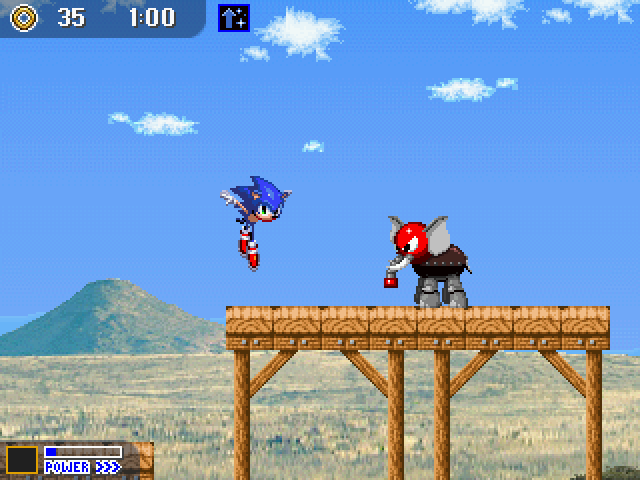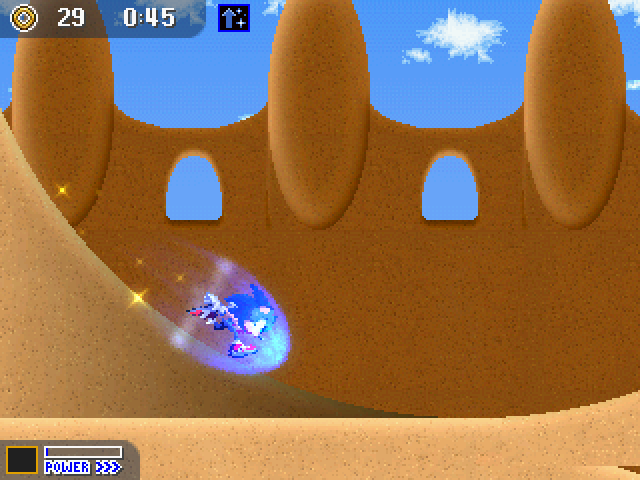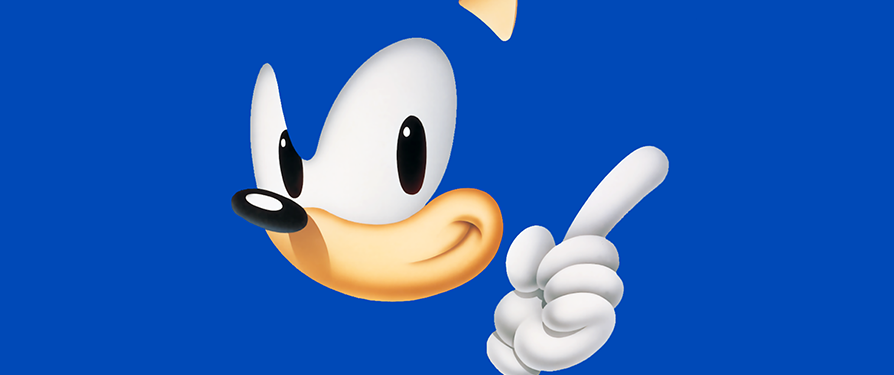 The man on the left is Kuzko. He found his groove in Disney’s The Emperor’s New Groove. In this forgettable animated movie, starring David Spade and John Goodman, Kuzko (Spade) is turned into a llama by some crazy, usurper bitch and Pacha (Goodman) has to save him. They run around and do a whole bunch of wacky shit, avoiding the crazy, usurper bitch as much as possible. They get to Kuzko’s palace to reverse the process, an epic battle ensues, and Kuzko returns to being emperor and the big, stupid, comic relief character teaches some kids how to talk to woodland creatures. What does Kuzko learn? While a llama, he changes his arrogant, selfish ways and embraces the world and the people that inhabit it. His 180-degree turn is truly heartwarming, albeit formulaic and uninteresting.
The man on the left is Kuzko. He found his groove in Disney’s The Emperor’s New Groove. In this forgettable animated movie, starring David Spade and John Goodman, Kuzko (Spade) is turned into a llama by some crazy, usurper bitch and Pacha (Goodman) has to save him. They run around and do a whole bunch of wacky shit, avoiding the crazy, usurper bitch as much as possible. They get to Kuzko’s palace to reverse the process, an epic battle ensues, and Kuzko returns to being emperor and the big, stupid, comic relief character teaches some kids how to talk to woodland creatures. What does Kuzko learn? While a llama, he changes his arrogant, selfish ways and embraces the world and the people that inhabit it. His 180-degree turn is truly heartwarming, albeit formulaic and uninteresting.
What does Kuzko have to do with a Sonic fangame? Well, BlazeHedgehog’s Sonic: The Fated Hour has been in development for ten years. Ten. Read up on it, because I’m not lying here. Finally, after years of gameplay changes and data wipes, Fated Hour has finally found its “groove” in the alpha version of Sonic Worlds. Kuzko’s change of heart happens after he is transformed back into a human and Fated Hour is at this point still in the “llama” stage. The project has made a huge change for the better, hopefully leading to greater things, but there is still a long way to go to fully develop its character, like Kuzko.
 Fated Hour offers up your standard fare of Genesis-styled gameplay, while expanding upon it to keep it more unique amongst the sea of booths at SAGE this year. These new inclusions are first made apparent by Amy Rose, who offers to explain the controls to the game. Rather than only have the jump button, there are four in use during the game. However, only two are in use during this showcase: jump and jump cancel. Jump cancel will break the ball Sonic normally goes into during a jump and allows him to grind a rail or wall-kick. The multiple button setup sounds good on paper, but trying to wall-jump between two walls with two buttons is cumbersome and mapping Sonic’s wall-stick to the jump button or making it automatic would work better. When the game offers high scores for best times, the time-attackist might have difficulty trying to blow by a section of wall jumping. This button tandem is like an old man, because it threw off my groove.
Fated Hour offers up your standard fare of Genesis-styled gameplay, while expanding upon it to keep it more unique amongst the sea of booths at SAGE this year. These new inclusions are first made apparent by Amy Rose, who offers to explain the controls to the game. Rather than only have the jump button, there are four in use during the game. However, only two are in use during this showcase: jump and jump cancel. Jump cancel will break the ball Sonic normally goes into during a jump and allows him to grind a rail or wall-kick. The multiple button setup sounds good on paper, but trying to wall-jump between two walls with two buttons is cumbersome and mapping Sonic’s wall-stick to the jump button or making it automatic would work better. When the game offers high scores for best times, the time-attackist might have difficulty trying to blow by a section of wall jumping. This button tandem is like an old man, because it threw off my groove.
As for the rest of the gameplay, the traditional Sonic action is solid, as expected from a Worlds title not in the hands of a 12-year old spaz on YouTube. The game really shows Blaze’s understanding of Worlds and I wish more projects using this engine would take note on how to fully utilize its potential. His notable expansion on the Genesis formula are the “load outs,” skill sets that range from “normal” to “speed,” and they provide a much-needed dose of re-playability. If you found an area to wall kick, for example, and you did not pick a load out with wall kick, that encourages the player to come back with a new load out to explore said area.
Graphically, the game is a winner for the majority of the demo. Sonic’s movements are fluid and, simply, amazing. Effects, like the burst and shield, really pop and are a joy to look at. The realistic backgrounds is rather neat and welcomely complements the dull, sand foreground. There is only one original badnik, an elephant, in the demo and he is quite the sight. I rarely see custom badniks as polished as the elephant in Fated Hour. The only time the graphics falter is in the fauna department, as the trees and leaves appeared to have been done in MSPaint in a short amount of time, but it is forgivable.
 Nonetheless, I did say that Fated Hour was still a “llama” and its underdeveloped feel comes from the short level length and overall empty feel of the demo. The game is sorely missing gimmicks, as it only uses grind rails, springs, rainbow rings, and moving/crumbling platforms, which is par for the course for every Sonic level. The demo is like Kronk, as it lacks any sort of depth. The game looks like a rockin’ good time at first, with a great sheen and solid engine, but there is just nothing in the game to really take advantage of it or keep you interested.
Nonetheless, I did say that Fated Hour was still a “llama” and its underdeveloped feel comes from the short level length and overall empty feel of the demo. The game is sorely missing gimmicks, as it only uses grind rails, springs, rainbow rings, and moving/crumbling platforms, which is par for the course for every Sonic level. The demo is like Kronk, as it lacks any sort of depth. The game looks like a rockin’ good time at first, with a great sheen and solid engine, but there is just nothing in the game to really take advantage of it or keep you interested.
The level design could use more work, too, as Fated Hour seems to repeat itself a few times over. Over the course of exploring the entire stage through one run, I found the same sequence of crumbling bridge on top of crumbling bridge about five times and it gets stale rather quick. Also, there are great sequences to cut loose, only to suddenly come to a halt at a wall and totally killing the flow of certain parts of the level. The level must always have an opportunity to keep up the pace and Fated Hour fails to deliver more than a few times.
 To be purely subjective here, I was unexcited when I played this demo. If you follow this game’s development on SFGHQ, Blaze usually makes a daily post with pictures or movies to show his progress. While the pace of his progress is impressive, it took the wind out of my sails once I played the demo. The demo was so short, that I felt that I watched the whole demo through the videos. A similar feeling was evoked when I saw The Emperor’s New Groove in theaters, because the trailer, which appeared during every commercial break on every network, showed us all the best parts. The small level left any surprises to be found and the “best parts” I had already seen. However, it’s just a demo of a level that we will never see again and judging by Blaze’s development, I think this game will be starting conga lines worthy of the Emperor himself.
To be purely subjective here, I was unexcited when I played this demo. If you follow this game’s development on SFGHQ, Blaze usually makes a daily post with pictures or movies to show his progress. While the pace of his progress is impressive, it took the wind out of my sails once I played the demo. The demo was so short, that I felt that I watched the whole demo through the videos. A similar feeling was evoked when I saw The Emperor’s New Groove in theaters, because the trailer, which appeared during every commercial break on every network, showed us all the best parts. The small level left any surprises to be found and the “best parts” I had already seen. However, it’s just a demo of a level that we will never see again and judging by Blaze’s development, I think this game will be starting conga lines worthy of the Emperor himself.
I recommend Sonic: The Fated Hour to all SAGE goers and if you like what you see, you can keep up with Blaze’s development at Sonic Fan Games HQ.

